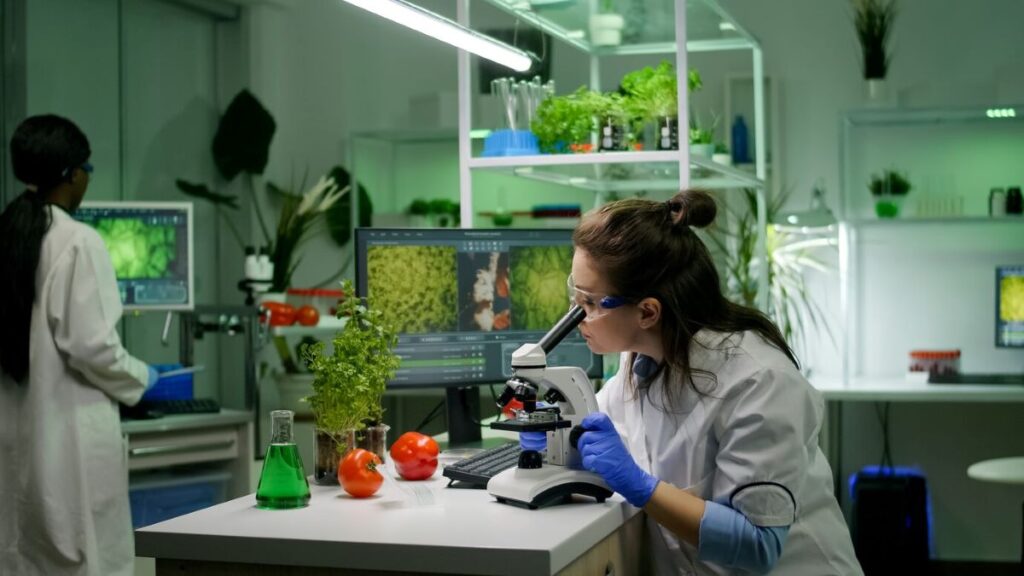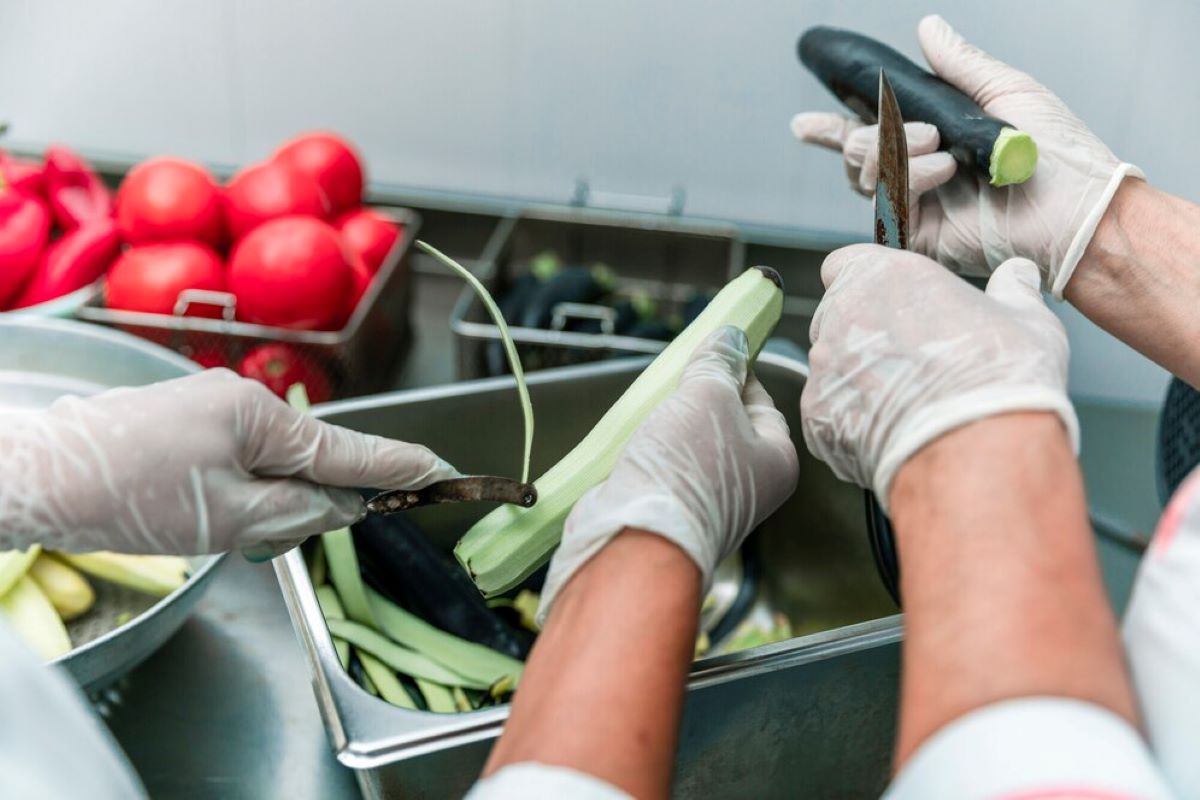Why Food Safety Traceability Software Matters in 2025
In 2025, the global food industry is at a crucial point where advanced food safety traceability software has become essential. These complex systems are the foundation of modern food safety management, providing complete solutions for tracking, monitoring, and documenting every stage of the food supply chain.
Food safety traceability software represents a revolutionary shift from traditional paper-based systems to intelligent, automated platforms that ensure:
- Real-time monitoring of food safety parameters
- Instant access to critical documentation
- Automated compliance reporting
- Rapid response capabilities for potential safety issues
The Need for Advanced Traceability Solutions
The globalisation of food supply chains has created unprecedented complexity, with products crossing multiple borders and changing hands numerous times before reaching consumers. This intricate web of suppliers, processors, and distributors demands robust traceability solutions powered by cutting-edge technologies like blockchain to maintain transparency and accountability.
The Challenges Faced by Food Businesses
In 2025, the stakes are higher than ever. Food businesses face intensifying pressure to:
- Maintain uncontaminated products
- Protect brand reputation
- Enhance operational efficiency
- Navigate complex supply chains
- Meet stringent regulatory requirements
As food safety challenges evolve, advanced traceability software emerges as the cornerstone of risk management and quality assurance in the food industry.
1. Ensuring Consumer Safety and Brand Reputation with Food Safety Traceability Software
Food safety software systems is essential for protecting both consumer health and brand reputation in today’s food industry. With advanced tracking systems in place, businesses can have complete control over product quality at every stage of the supply chain, ensuring that contaminated products never reach the hands of consumers.
Real-time Monitoring and Quick Action
One of the key benefits of food safety traceability software is its ability to monitor critical factors in real-time and respond swiftly to any issues that may arise. This includes:
- Immediate detection of temperature fluctuations
- Instant alerts for potential contamination risks
- Rapid identification of affected product batches
- Quick isolation of compromised items
By having these capabilities, businesses can take immediate action to prevent further damage and protect both their customers and their brand reputation.
Unbreakable Chain of Accountability
Another important aspect of food safety traceability software is its ability to create a comprehensive record of every step in the product journey. This includes:
- Raw material sourcing
- Processing conditions
- Storage temperatures
- Transportation routes
- Final delivery
By documenting each touchpoint along the way, businesses can ensure accountability and transparency throughout their supply chain.
Effective Recall Management
In the unfortunate event that a food safety issue does occur, traceability software can help businesses manage recalls more effectively. This includes:
- Precise identification of affected products
- Targeted recall execution
- Minimized financial impact
- Protected consumer trust
By having a clear understanding of which products are affected and where they are located, businesses can act quickly to remove them from circulation and prevent any harm to consumers.
Building Trust through Compliance
Brand reputation is heavily influenced by how well a company demonstrates its commitment to food safety practices. Traceability software provides documented evidence of compliance with regulations and industry standards, which can help build trust with stakeholders such as:
- Customers
- Suppliers
- Regulatory authorities
By being able to prove that they are following best practices when it comes to food safety, businesses can strengthen their position in the market and differentiate themselves from competitors.
Eliminating Human Error with Automation
One of the biggest challenges in maintaining accurate records is the potential for human error. However, with the integration of automated record-keeping systems through traceability software, businesses can eliminate this risk and ensure data integrity. As discussed in this article, automation not only streamlines processes but also significantly enhances compliance accuracy.
By having consistent processes in place for recording information such as temperature readings or transportation details, companies can create an impenetrable defence against food safety risks and reputational damage. The importance of data automation in achieving this cannot be overstated, as it plays a crucial role in ensuring accurate record-keeping.
Furthermore, the implementation of food safety traceability software has been shown to improve overall compliance rates, making it an invaluable tool for any business operating within the food industry.

2. Enhancing Operational Efficiency and Cost Reduction through Supply Chain Management
Digital traceability solutions are changing the game in supply chain management by giving us the ability to see food processes in real-time. With advanced tracking systems, we can make our operations smoother and more efficient by:
- Automated Data Collection: This means no more manual record-keeping, which not only saves us money on labour costs but also reduces the chances of human error.
- Real-time Inventory Management: By keeping a close eye on our stock levels, we can avoid ordering too much or letting any products go to waste.
- Predictive Analytics: Using artificial intelligence (AI), we can gain insights that help us optimise our ordering patterns and allocate our resources effectively.
- Temperature Monitoring: With automated sensors in place, we can ensure that our products are stored at the right temperature, preventing spoilage and minimising losses.
Uncovering Hidden Inefficiencies with Supply Chain Data Analysis
By analysing data from our supply chain using traceability software, we can discover inefficiencies that may have been hidden before:
- Identifying bottlenecks in our production and distribution processes
- Spotting redundant processes that are driving up our operational costs
- Tracking delivery routes to plan our logistics more effectively
- Monitoring how well our suppliers are performing
The Cost Benefits of Implementing Traceability Systems
When we implement comprehensive traceability systems like Squizify, we can expect to see measurable cost benefits:
Studies show businesses achieve up to 30% reduction in operational costs through enhanced supply chain visibility and automated monitoring systems
Creating a Connected Ecosystem with IoT Devices and Sensors
By smartly integrating Internet of Things (IoT) devices and sensors into our operations, we can create a connected ecosystem that brings about several advantages:
- Reducing the need for manual inspections
- Minimising errors in documentation
- Speeding up the movement of products through our supply chain
- Optimising storage conditions for perishable goods
Making Informed Decisions with Data
With data-driven decision making, we can allocate our resources efficiently, reduce waste, and maintain optimal inventory levels. This means we’re not only saving money but also running a more sustainable operation.
The strategic use of traceability software is transforming how we manage our supply chain. Instead of being seen as a cost centre, it’s now becoming an operation that generates value for our business.
3. Complying with Regulations and Standards Using Traceability Software
The Food Safety Modernization Act (FSMA) represents a significant shift in food safety regulations, emphasising prevention rather than reaction to contamination issues. Food safety traceability software serves as a critical tool for businesses to meet these stringent requirements through:
- Real-time Documentation: Automated recording of critical control points, temperature monitoring, and handling procedures
- Digital Audit Trails: Comprehensive tracking of every product movement and transformation throughout the supply chain
- Immediate Access: Quick retrieval of required documentation during inspections or audits
The implementation of traceability software transforms traditional compliance methods into streamlined digital processes:
- Automated Compliance Reporting
- Scheduled generation of required documentation
- Instant alerts for non-compliance issues
- Digital signatures and time stamps for accountability
- Risk Management
- Early detection of potential hazards
- Automated corrective action protocols
- Systematic approach to preventive controls
Traceability software enables businesses to shift from manual record-keeping to sophisticated preventive measures:
“Prevention through technology reduces human error and strengthens food safety protocols across all operational levels”
The software’s ability to maintain detailed records helps organisations:
- Track supplier certifications
- Monitor employee training compliance
- Document sanitation procedures
- Verify temperature controls
- Manage allergen controls
These capabilities align with FSMA’s preventive controls requirements while providing the necessary documentation for regulatory inspections and third-party audits.
4. Overcoming Challenges in Complex Supply Chains with Advanced Solutions
Modern food supply chains stretch across continents, involving numerous stakeholders, multiple handling points, and diverse transportation methods. This intricate network creates significant challenges for maintaining food safety and traceability.
Advanced technological solutions address these complexities through:
- Real-time Data Integration: Connecting multiple intermediaries through centralised platforms
- Automated Documentation: Reducing manual errors and streamlining information flow
- IoT Sensors: Monitoring environmental conditions throughout transportation
- Digital Authentication: Verifying product authenticity at each transfer point
The implementation of standardised data protocols enables seamless communication between different systems and stakeholders. These protocols create a unified language for tracking products, ensuring consistent documentation across the supply chain.
Packaging Safety Integration
Safe packaging plays a critical role in maintaining product integrity and traceability. Advanced traceability systems now incorporate:
- Smart packaging with embedded sensors
- QR codes linking to complete product histories
- Temperature-sensitive indicators
- Tamper-evident seals with digital verification
These innovations allow real-time monitoring of packaging conditions and immediate alerts for any breaches in safety standards.
Supply Chain Visibility
Modern traceability software provides:
- End-to-end visibility of product movement
- Instant access to certificates of analysis
- Automated alerts for potential contamination risks
- Detailed audit trails for each handling point
The integration of blockchain technology adds an extra layer of security and transparency, creating immutable records of every transaction and transfer within the supply chain. This technological advancement ensures accountability and builds trust among stakeholders while maintaining the highest standards of food safety.

5. The Future of Food Safety Traceability Software: Predictions for 2025 and Beyond
The world of food safety traceability software is constantly changing and improving. One of the main drivers behind this evolution is blockchain technology, which offers greater transparency and security throughout the entire food supply chain. With its decentralised nature, blockchain creates an unchangeable record of transactions, ensuring that critical food safety data cannot be modified or tampered with.
Key Technological Advancements Expected by 2025:
- AI-Powered Predictive Analytics: Machine learning algorithms will detect potential safety issues before they escalate
- IoT Integration: Smart sensors will provide real-time monitoring of food conditions throughout transportation
- Quantum Computing Applications: Advanced processing capabilities will handle complex supply chain calculations
- Digital Twin Technology: Virtual replicas of physical supply chains will enable better risk assessment
The globalised food industry requires sophisticated regulatory compliance measures. Cross-border trade demands harmonised standards and real-time verification capabilities. To meet these needs, advanced traceability software will incorporate:
- Automated compliance checking against multiple international standards
- Real-time updates to reflect changing regulations across different jurisdictions
- Multi-language support for global operations
- Integrated certification management systems
These developments align with the growing need for standardised food safety protocols across international markets. Companies like Squizify are already pioneering SaaS platforms that offer 24/7 accessibility and automated record-keeping – essential features for future-ready traceability solutions.
The integration of blockchain with existing traceability systems will create robust frameworks capable of handling complex international supply chains while maintaining the highest standards of food safety and regulatory compliance.
Conclusion
Food safety traceability software is essential for food industry operations in 2025. It offers:
- Better Consumer Protection through real-time monitoring and quick response to contamination
- Improved Operations with data-driven insights and automated documentation
- Compliance with Regulations through comprehensive management
- Visibility in Supply Chain across complex global networks
Advanced traceability platforms like Squizify turn food safety challenges into competitive advantages. These systems offer round-the-clock access, automated record-keeping, and customised solutions for specific industry needs.
Businesses must act now to secure their position in a market that is becoming more regulated and focused on consumer preferences. Investing in comprehensive food safety traceability software is not just about meeting current standards—it’s about building a strong foundation for future growth and success in the ever-changing food industry landscape of 2025 and beyond.
Related : Remote Temperature Monitoring System Setup for Multi-Site Kitchens

